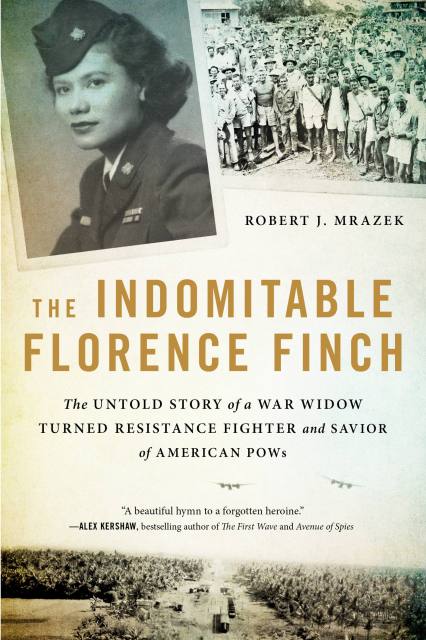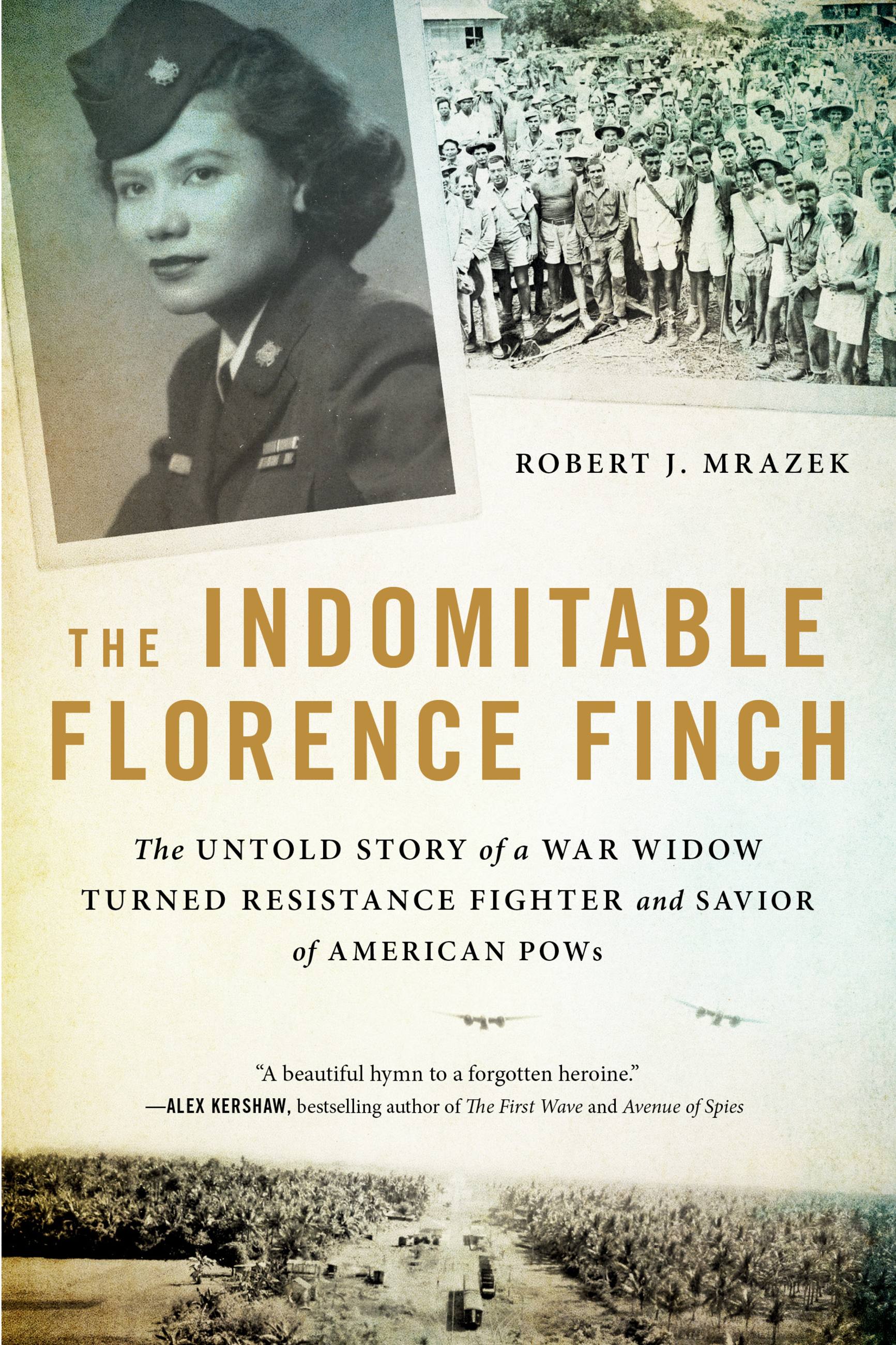Promotion
Use code MOM24 for 20% off site wide + free shipping over $45
The Indomitable Florence Finch
The Untold Story of a War Widow Turned Resistance Fighter and Savior of American POWs
Contributors
Formats and Prices
Price
$18.99Price
$23.99 CADFormat
Format:
- Trade Paperback $18.99 $23.99 CAD
- ebook $2.99 $3.99 CAD
- Hardcover $28.00 $35.00 CAD
- Audiobook Download (Unabridged)
This item is a preorder. Your payment method will be charged immediately, and the product is expected to ship on or around June 21, 2022. This date is subject to change due to shipping delays beyond our control.
Also available from:
“An American hero…finally gets her due in this riveting narrative. You will absolutely love Florence Finch: her grit, her compassion, her fight. This isn’t just history; she is a woman for our times.” –KEITH O’BRIEN, the New York Times bestselling author of Fly Girls
The riveting story of an unsung World War II hero who saved countless American lives in the Philippines.
When Florence Finch died at the age of 101, few of her Ithaca, NY neighbors knew that this unassuming Filipina native was a Presidential Medal of Freedom recipient, whose courage and sacrifice were unsurpassed in the Pacific War against Japan. Long accustomed to keeping her secrets close in service of the Allies, she waited fifty years to reveal the story of those dramatic and harrowing days to her own children.
Florence was an unlikely warrior. She relied on her own intelligence and fortitude to survive on her own from the age of seven, facing bigotry as a mixed-race mestiza with the dual heritage of her American serviceman father and Filipina mother.
As the war drew ever closer to the Philippines, Florence fell in love with a dashing American naval intelligence agent, Charles "Bing" Smith. In the wake of Bing's sudden death in battle, Florence transformed from a mild-mannered young wife into a fervent resistance fighter. She conceived a bold plan to divert tons of precious fuel from the Japanese army, which was then sold on the black market to provide desperately needed medicine and food for hundreds of American POWs. In constant peril of arrest and execution, Florence fought to save others, even as the Japanese police closed in.
With a wealth of original sources including taped interviews, personal journals, and unpublished memoirs, The Indomitable Florence Finch unfolds against the Bataan Death March, the fall of Corregidor, and the daily struggle to survive a brutal occupying force. Award-winning military historian and former Congressman Robert J. Mrazek brings to light this long-hidden American patriot. The Indomitable Florence Finch is the story of the transcendent bravery of a woman who belongs in America's pantheon of war heroes.
The riveting story of an unsung World War II hero who saved countless American lives in the Philippines.
When Florence Finch died at the age of 101, few of her Ithaca, NY neighbors knew that this unassuming Filipina native was a Presidential Medal of Freedom recipient, whose courage and sacrifice were unsurpassed in the Pacific War against Japan. Long accustomed to keeping her secrets close in service of the Allies, she waited fifty years to reveal the story of those dramatic and harrowing days to her own children.
Florence was an unlikely warrior. She relied on her own intelligence and fortitude to survive on her own from the age of seven, facing bigotry as a mixed-race mestiza with the dual heritage of her American serviceman father and Filipina mother.
As the war drew ever closer to the Philippines, Florence fell in love with a dashing American naval intelligence agent, Charles "Bing" Smith. In the wake of Bing's sudden death in battle, Florence transformed from a mild-mannered young wife into a fervent resistance fighter. She conceived a bold plan to divert tons of precious fuel from the Japanese army, which was then sold on the black market to provide desperately needed medicine and food for hundreds of American POWs. In constant peril of arrest and execution, Florence fought to save others, even as the Japanese police closed in.
With a wealth of original sources including taped interviews, personal journals, and unpublished memoirs, The Indomitable Florence Finch unfolds against the Bataan Death March, the fall of Corregidor, and the daily struggle to survive a brutal occupying force. Award-winning military historian and former Congressman Robert J. Mrazek brings to light this long-hidden American patriot. The Indomitable Florence Finch is the story of the transcendent bravery of a woman who belongs in America's pantheon of war heroes.
Genre:
- On Sale
- Jun 21, 2022
- Page Count
- 368 pages
- Publisher
- Hachette Books
- ISBN-13
- 9780316422239
Newsletter Signup
By clicking ‘Sign Up,’ I acknowledge that I have read and agree to Hachette Book Group’s Privacy Policy and Terms of Use







